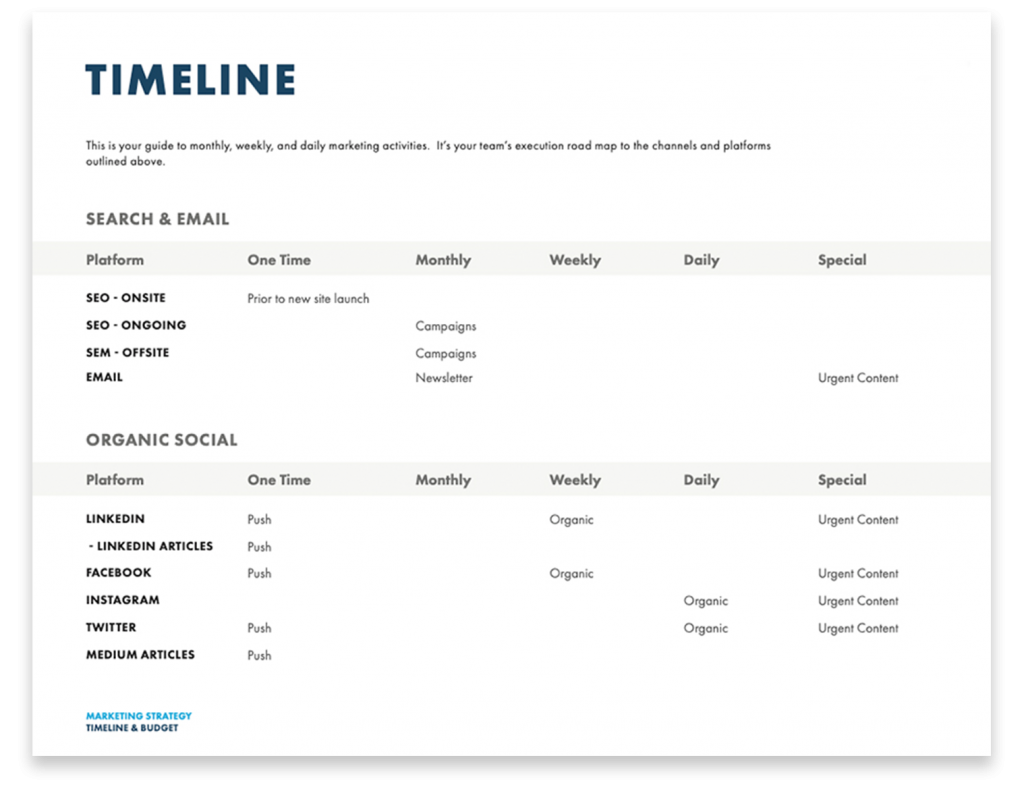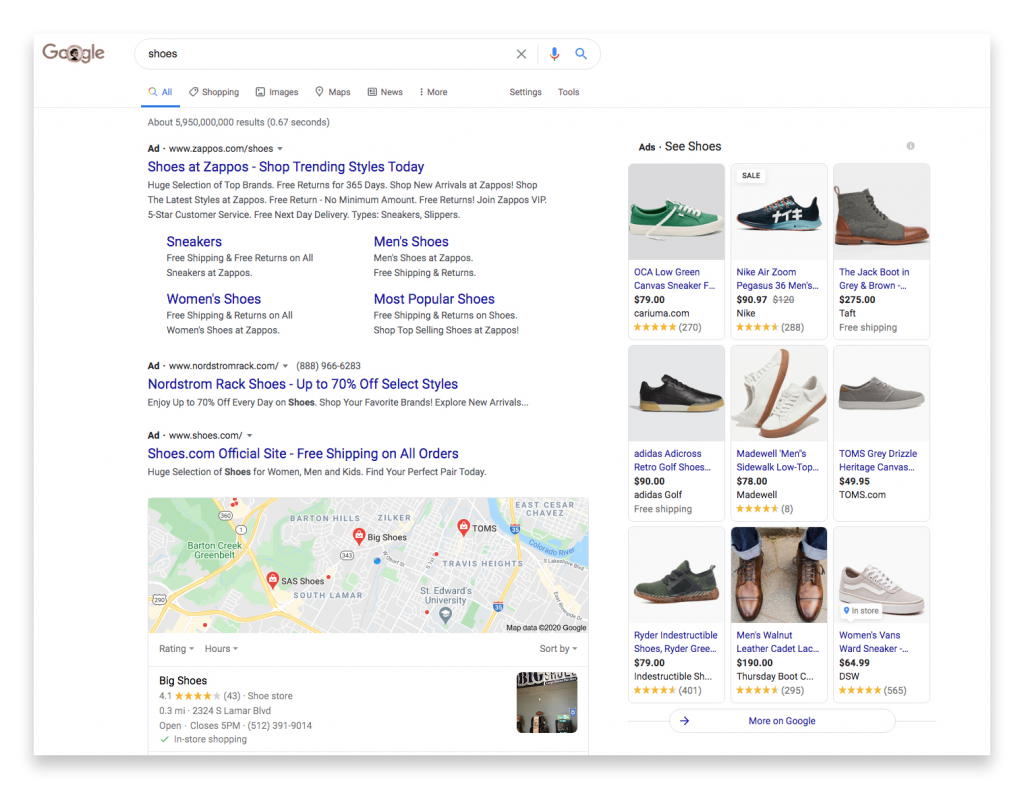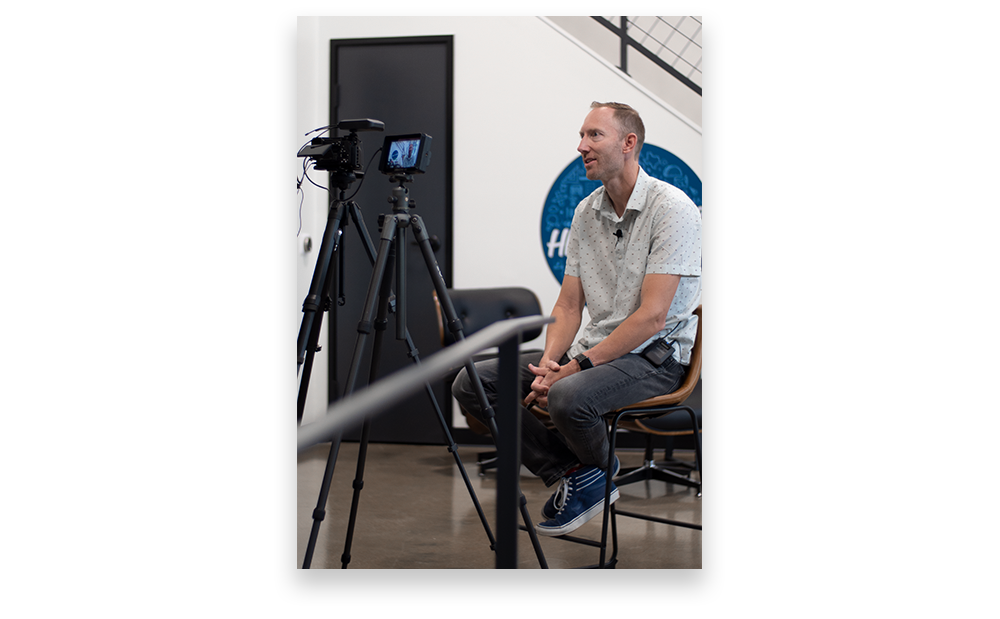The internet is an immensely crowded place. With thousands of new websites being created every day, yours is inevitably going to have some competition. While creating a high quality website is certainly a great foundation, quality alone will not ensure people get to your site. It takes proactive efforts to reach your target customers, connect with them, and get them engaged on your site. This is where marketing comes in.
Before you get too excited about announcing your brand new website to the world, let’s take a step back. The first few days after your site launch can often reveal bugs that still need to be ironed out. Instead of spreading the word about your site the minute it launches, give it a day or two to smooth out any rough edges. Then, once you’re confident everything is functioning properly, you can start to get the word out!
“It takes proactive efforts to reach your target customers, connect with them, and get them engaged on your site.”
GOALS
First, revisit the goals you wish to achieve with your new site and think about how they propel your overall business growth. Your likely created your website for more than one purpose, including:
- Brand Awareness
- Education and Resources
- General Marketing
- Lead Generation
- Customer/Donor Acquisition
- Prospective/Existing Customer Engagement
- eCommerce
- Blog Engagement
- Phone Calls/Contact
Hopefully when your website was created, your overall business objectives drove each design decision. Now that you have a website specifically crafted to help you achieve your business goals, it’s time to get to work making the most of it.
MARKETING STRATEGY
In order to maximize the results for your marketing efforts, it’s important to have a strategy in place. The goal is to reach the right people at the right time, and spend your marketing dollars wisely. Here at HMG Creative we break our marketing strategy down into four parts:
1. Personas
The first step is defining your target audience.
Personas are formed by insights on who your audience is – the specific folks you’re attempting to reach. Simply put, personas are semi-fictional representations of your target customers, based on research and data. A good target persona has a vested interest in your product, service, or even your company’s cause. Without well-defined personas, you’re wasting time and resources reaching people that probably have little interest in what you’re dishing out.
At HMG we conduct research and interviews to reveal data-driven insights about each of your target audiences. This process defines specific characteristics and habits for unique personas, including:
- Personal Info: Age, Location, Job Title, Income, Habits & Concerns
- Professional Info: Goals, Work Style, Company Size, Influence, Values & Worries
- Digital Behavior: Preferred Social Media Platforms, Online Resources & Time Spent Online
- Content Responsiveness: Preferred Communication Channels, Potential Messages, Challenges & Opportunities
Marketing with well-defined personas helps you strategically connect with the people who are most likely to engage with your brand. In addition to saving you time and money, defining personas also provides feedback from measurable results. By getting into the minds of your target customers, you will be able to drive more effective engagement.

“Marketing with well-defined personas helps you strategically connect with the people who are most likely to engage with your brand.”
2. Channels & Content
Each of your buyer personas has a sweet spot – a channel where they are most likely to be active and engage with your brand. Channels are essentially a means of communication, such as social media, email, print, content marketing, and even your own website. Identifying each of your audiences’ preferred channels highlights the best place to connect with them, opening the door to increased engagement.
On top of finding where your potential customers are, it’s equally important to know when they are there. Sending out a social media ad while your target audience is offline won’t do you much good. Depending on someone’s job and lifestyle, you can expect there will be certain parts of the day, month, and year that they will be more digitally active and potentially seeking out your product or service.
Once you know where to find your potential buyers, and when to engage with them, you can begin to create targeted content that piques their interest. Compelling content serves as a pull rather than push method of marketing, drawing in customers who are so interested in your brand, they actually give you permission to market to them.
3. Messaging
Now that you have fleshed out your buyer personas, it is time to craft the messages that will resonate with them. Your messaging should speak from the heart of your brand, and be tailored to each persona’s unique characteristics and journey, while being strategically crafted for the relevant channel. While your tone may change to best fit each persona and channel, your brand voice should always remain the same. At HMG, this constant voice stems from what we refer to as your brand story. Your brand story is the foundation for every aspect of your business, and acts as a guide for decision making.
This is your opportunity to communicate with your target audiences on a personal level, in their own language. Your messaging isn’t just about what you say, but how you say it. When a potential customer feels the message they are receiving was created specifically for them, they are more likely to respond to it on a deeper level.
4. Timeline & Budget
Your timeline is your team’s roadmap for execution within the selected channels and platforms. This should be a clear, practical plan that defines the frequency of communication recommended for each of your marketing channels. Essentially, it is a calendar of your upcoming marketing tasks.
Your budget should break down estimated costs for your project’s execution, management, design, and ad spend.

MARKETING TACTICS
There are many marketing techniques, all with their own pros and cons, and varying ROIs. Which methods you choose to implement will depend upon your product and service, and the channels that your target audiences most commonly use. The key is determining the right mix of channels that makes the most sense for your brand and customers.
Here we have highlighted some of the most effective digital marketing channels to utilize in 2020:
1. Email Marketing
An oldie but goodie, email marketing is still one of the best ways to directly engage with your audience. One of the reasons email is so effective is because anyone who receives emails from you chose to receive emails from you. Whether it was through a previous purchase they made or the signup form on your landing page, the individuals on your email list have willingly given you their contact information and are already expecting to hear from you.
To make the most out of your emails, use them as short, personalized points of contact. According to Epsilon, 80% of customers are more likely to make a purchase when their experience is customized! Use your customer’s first name in the email’s subject line, keep the copy short and informative, and include a clear CTA or button in the body of your email. And if you think email is fading, worry not; 99% of consumers still check their email at least once a day.
2. Social Media Marketing
Keeping with the idea of being direct and personal, social media marketing takes both of those to another level. Where social media differs from email and other marketing strategies, though, is that the focus is not necessarily on sales. Platforms like Instagram, Facebook and LinkedIn give you the opportunity to build brand awareness and establish an engaged community of followers that you can interact with directly. Rather than represent your brand as a corporate entity, you get to display your personality and become much more accessible and personal to your followers. As you engage with followers across multiple platforms, be sure to keep all of your accounts cohesive by using the same profile images, colors, and logos.
Leveraging your social media accounts takes continual monitoring and engagement. Because of this, you don’t want to focus on too many channels at once. Using the information you’ve already discovered about your personas, you can focus your social media efforts onto the platforms that will be most effective for your business.
If the world of hashtags, likes, and ephemeral content still seems a bit overwhelming or doesn’t fit into your team’s schedule, we can help you out with that!
3. Pay-Per-Click/Paid Search
Pay-per-click advertising (PPC) is a highly targetable method of engaging those leads who are already further down your marketing funnel. PPC opportunities are abundant now, but we’re going to focus on the two largest – Google Ads and Facebook/Instagram ads.
Google Ads
Google Ads work by targeting specific keywords. When someone performs a Google search, it triggers a bid by all the advertisers trying to rank for that keyword. Google then displays ads based on their relevancy and budget. These ads can help you connect with users who are already searching for products or services like yours. They can even assist you in beating out competitors who may have stronger SEO. Google ads include the product carousels and text ads that appear above organic search results, as well as YouTube video ads, and display ads that you find on various websites.

Google provides plenty of options to customize your ad’s target audience, so your personas will once again be very handy. By entering in target options like keyword, location, device, time, and demographics, you can be sure that you’re getting your ads in front of the right crowd. Once someone clicks on an ad, you (the advertiser) will be charged for the click, and the user will be taken to a landing page on your website. This should be a dedicated page containing a clear CTA to streamline the process you want your customer to perform.
Social Ads
Facebook and Instagram ads have similar targeting options, but the goal is less about you finding customers, and more about new customers finding you. Instead of ranking for keywords, like Google ads, social ads target users based on their interests and behaviors. The vast amount of information that users share on social media makes finding your target audience increasingly easy.
Along with being highly targeted, both Google and social ads offer detailed performance information as well as great budget flexibility. By pairing your Google Ads with Analytics, you can see your ad’s impressions, clicks, conversions, and more in real time. Facebook also has its own robust system for tracking analytics in its Ads Manager platform. All of this makes for a cost effective and controllable form of marketing that can be valuable to any business, regardless of its size.
4. Ongoing SEO
If you launched your site with HMG, or any other reputable web developer, then your website was already created with a solid SEO foundation. Still, this is just the beginning, as your website’s organic visibility requires an ongoing, intentional strategy. These efforts are necessary with search engine algorithms constantly changing, competition trying to outrank you, and content becoming outdated. The process of driving traffic through SEO is slow to get rolling, but when done properly, can provide you with a constant flow of new visitors at little cost.
After the launch of your website, your SEO efforts needs to be maintained in order to remain effective. This is no small task, but your strategy should include:
- Keywords- Each page of your site should strive to rank for one specific keyword that the copy, images, alt text, and other content all boil down to. This helps Google understand what your pages are about.
- Mobile- Now that over half of internet usage takes place on mobile devices, Google indexes websites based on their mobile version. It’s no longer enough for your mobile site to be a watered down or condensed version of the real thing. Now, your mobile site is the real thing.
- Responsiveness- 53% of users will leave your site if it takes more than three seconds to load. Optimize your pages to prevent long load times, and check your site regularly on different browsers and devices.
As mentioned, this is not an overnight process. Seeing actual results from your SEO efforts will likely take at least four months, but that is how Google wants it to work. Once you do start to see some results, your next step is to analyze what is working, and what’s not. Then it’s back to the drawing board. This constant cycle, along with monitoring your site for areas that need fixing or improving, is the core of ongoing SEO.
5. Inbound/Content Marketing
Content creation and inbound marketing work hand-in-hand to drive traffic to your website. The buyer journey cycle that inbound efforts ideally create is commonly explained as attract, engage, delight.
ATTRACT
While getting the word out is important, you want to focus on attracting the right customers to your site. One of the best ways to do this is by creating engaging content that people will find organically. Write blog posts, make videos, and create infographics that provide valuable information to your target audience. When someone comes across a piece of content that they find useful or entertaining, they will naturally be attracted to the source to see what else they can find.
ENGAGE
Now that interested consumers have found your website, you have the opportunity to form a relationship with them. On your site, offer these users something else, like a free eBook or discount code, but request their email address in exchange. Once they provide their contact information, you then have a means of communicating with them so you can stay in touch. This nurturing communication is where you can begin to really engage with your leads and customize their experience with your brand. Tailoring their journey will enhance the overall user experience, build trust with your brand, and ultimately work to establish long-term relationships with potential loyal advocates.
DELIGHT
By this point, you have formed a relationship with your leads and shown them the value that your brand offers. As they move through the funnel to convert and become customers, it’s important to remember that the job’s not done! Keeping your customers engaged, coming back for more, and delighted with their experience with your brand is a critical step. Focus on customer retention by sending loyalty rewards, new deals, and shareable content to let them know they’re appreciated. When a customer falls in love with your brand, they’ll be quick to shower your company with praise and tell their friends. At this point, your marketing is done for you – all thanks to your new brand ambassadors.

6. Influencer Marketing
Influencer marketing uses endorsements from individuals who have a dedicated following and are seen as experts in their niche. By leveraging the reach of an influencer, you can more organically connect with their audience. An influencer doesn’t necessarily need to have millions of social media followers, but they do need to have a highly engaged audience. By providing an influencer with a discount code, or partnering with them for a giveaway or contest, you build brand awareness and attract a new target market to your business. Plus, by providing an influencer with a custom URL on your site to direct their audience to, you can easily track the ROI on your efforts.
UP AND RUNNING
Unfortunately, the days of “if you build it, they will come” are long gone. Driving people to your website has become a round-the-clock endeavor that requires a strategic gameplan. In our previous blog, we referred to a website launch as being both the end of one race, and the beginning of another. Now that your site is up and running, the second race has begun!
If you and your team need some support with your marketing, let us know! We’ll help you develop a game plan to strategically reach your target audiences, and cruise down the perfect pathway to grow your brand and achieve a sustainable competitive advantage in the market.